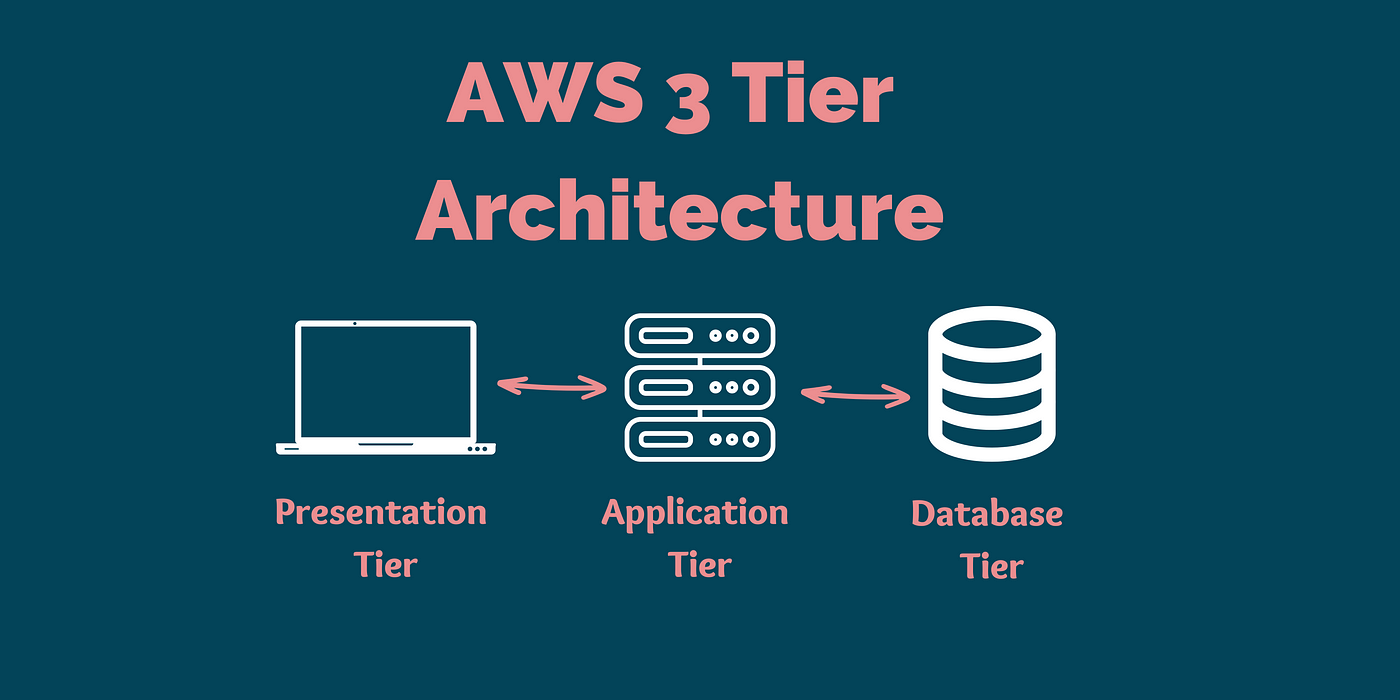Deploying a Highly Available Three-Tier Architecture in AWS using Terraform
 Rahul wath
Rahul wath
Introduction
When building a cloud-based application, it’s critical to consider the underlying architecture and environment to ensure scalability, availability, and security. Using Infrastructure-as-Code (IaC) tools like Terraform has become increasingly popular for automating the deployment and management of cloud resources.
In this article, we’ll explore how to deploy a highly available three-tier architecture in AWS using Terraform. Our architecture will consist of:
An EC2 Auto Scaling group for our web tier and app tier
An RDS MySQL database for our data tier
A bastion host for secure remote access
Using Terraform enables us to efficiently deploy and manage resources while ensuring our architecture is scalable, highly available, and secure.

What is Three-Tier Architecture and Why Three-Tier?
A Three-Tier Architecture is a widely used architectural pattern for cloud-based applications. It provides increased scalability, availability, and security by dividing the application into three distinct layers:
Web/Presentation Tier (Front End): Houses user-facing elements such as web servers and interfaces.
Application Tier (Back End): Manages backend logic and processes user requests.
Data Tier: Stores and manages application data, typically in a database.
Benefits of Three-Tier Architecture:
Scalability: Each tier can scale independently to handle demand.
Availability: Resources spread across multiple Availability Zones (AZs) ensure resilience.
Security: Tiers are isolated using security groups and private subnets, reducing attack surfaces.
Architecture Overview
We will deploy the following components:
Network Infrastructure
VPC with a CIDR block of
10.0.0.0/16Subnets:
2 public subnets for the web tier (
10.0.0.0/28,10.0.0.16/28)2 private subnets for the application tier (
10.0.0.32/28,10.0.0.48/28)2 private subnets for the database tier (
10.0.0.64/28,10.0.0.80/28)
Route Tables:
A public route table connected to an Internet Gateway
A private route table connected to a NAT Gateway
Compute and Storage
Web Tier: EC2 Auto Scaling group across public subnets
App Tier: EC2 Auto Scaling group across private subnets
Data Tier: RDS MySQL instance deployed across two AZs
Additional Components
Load Balancers:
An Application Load Balancer (ALB) for the web tier
An internal ALB for the app tier
Bastion Host: For secure access to private subnets
Elastic IPs, Internet Gateway, and NAT Gateway: For connectivity
Implementation Steps
Prerequisites
An AWS account with IAM user access
A code editor (e.g., VS Code)
Familiarity with Terraform, Linux commands, and SSH
You can find all of the Terraform code used in this tutorial on the following GitHub repository:
https://github.com/rahulwath/Three-Tier-Architecture-Terraform
Clone this repository to your local machine.
Install Terraform and configure your AWS credentials.
Review and update the Terraform configuration files as needed.
Run terraform init to initialize the Terraform working directory.
Run terraform apply to deploy the infrastructure.
Conclusion
Deploying a highly available three-tier architecture using Terraform ensures scalability, availability, and security for your application. By following this guide, you can achieve a robust and efficient infrastructure in AWS that aligns with modern best practices. Terraform’s declarative syntax makes it easier to automate and manage complex environments, allowing you to focus on building your application.
Subscribe to my newsletter
Read articles from Rahul wath directly inside your inbox. Subscribe to the newsletter, and don't miss out.
Written by

Rahul wath
Rahul wath
An experienced DevOps Engineer understands the integration of operations and development in order to deliver code to customers quickly. Has Cloud and monitoring process experience, as well as DevOps development in Windows, Mac, and Linux systems.